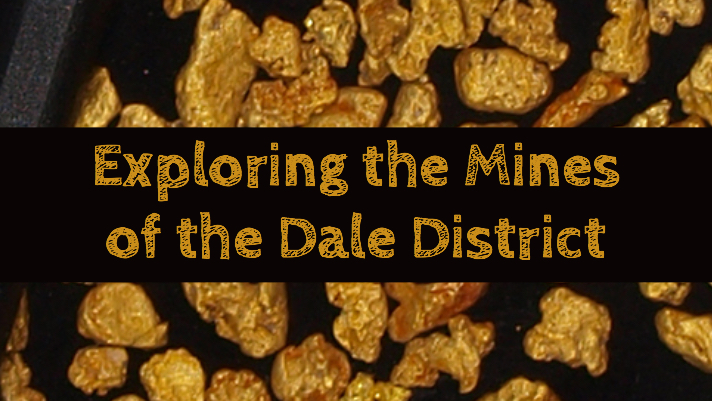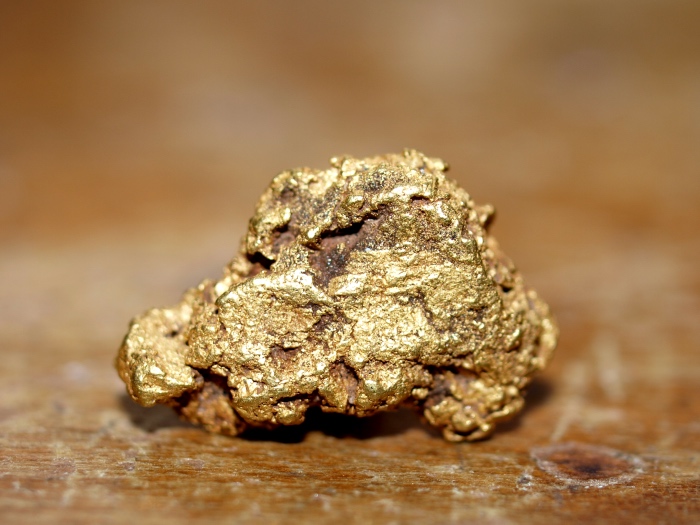
The Dale Mining District serves as an excellent example of how the hope for making a fortune from by striking it rich by recovering gold will draw people to hostile climates where they would rationally never want to live. The District would later confirm that nobody would put up with the privations of living in a desert when the hope of such riches no longer remains.
The Dale Mining District went from being one of the most productive gold mining areas in California to the barren location it was before the precious yellow metal was discovered.
In 1881, gold was discovered in what would become the Dale Mining District. This area of scorching desert is located in the Pinto Mountains of San Bernardino County, CA. Twenty-Nine Palms, the closest largest incorporated area contains a modest population of 25,000 and lies 15 miles to the northwest.
The Rich Mines of the Dale District
A number of the significant gold mines made up the Dale mining district during its heydays.
The Brooklyn Gold Mine was first established in the late 1800s in a canyon within the Pinto Mountains. It was later sold to the Brooklyn Mining Company in 1899, which gave it the company name. The mine drew its water from nearby Cottonwood Springs. It initially closed down with many of the old mines in 1916, but later operated on a limited basis until just before World War II, when it permanently closed by the federal government.
The OK Mine was started by an individual miner in 1890, who worked the mine until 1899. He then sold it to the Seal of Gold Mining Company in 1899 during the district’s brief heyday when large operators moved in. Under this new management it increased operations and became one of the district’s most successful mines. The expanded population helped lure the old Dale city to the area when it relocated. It continued operations until the beginning of World War II when all the mines were ordered closed by the federal government.
After the war some miners returned and used the location at times until the 1980s when it was finally abandoned permanently.
There is today more evidence of human occupation here than in New Dale itself as at least limited activity went on until the 1980s. Although it is totally abandoned now, at least the evidence of human occupation is much more recent. Although lots of the old mining structures have been damaged by vandals, there is still more to see at this site.
Read: Gold in the Mojave Desert of Arizona & California

The Cities of Dale
The Dale Mining District was sort of named after Dale City. This town was first built near the only nearby water source in 1884. Dale City grew rapidly for about 15 years. During the town’s brief time of prosperity, businesses grew up to serve the needs of local miners. But the town’s real purpose was its water.
Perhaps one thing about boom towns to remember is do not make many long-term plans. In 1899 pumps and pipes laid to bring water from the wells directly to the mines. Dale City was then not needed for gold milling, so it now had no purpose.
However, life did not totally end for Dale City. The residents simply moved about six miles south and formed a new town. Rather than go to the trouble of coming up with a different name, it was called New Dale.

At first, this location seemed to be an ideal site for a town. It was located between two of the biggest mines in the area. However, as the saying goes, nothing lasts forever. For New Dale, prosperity this time lasted less than twenty years, since those mines were both closed down in 1917.
When the big mines closed, the thousands of miners who lived nearby and worked there also left. If less than thirty-five years of prosperity between two towns sounds like a disturbing pattern, this was typical of so many mining areas throughout the west. There has to be a very good reason for people to live in such inhospitable desert regions. Often, the lure of gold will bring them. However, following the closure of the large mines, only a few small operations were left. Even they disappeared when all mines in the area were ordered closed by the federal government at the beginning of World War II.
A six-mile move would not have saved New Dale, as there was nothing nearby to find. This illustrates another of the few guarantees about boom towns. Invariably, they eventually go bust.
The Dale Mining District Today
You may have heard the old saying “Life can come full circle.” That is certainly true of old gold mining areas in the American West. Except for some very small scale recreational mining by people who never stay beyond a few days or so while they hunt for gold, the only humans who visit the area are tourists that are anxious to see the remnants of a ghost town.
The dry heat has served one final purpose. The nearly complete lack of rain has allowed portions of a few old buildings, along with some of the actual mining equipment to survive. Aside from this curiosity, this desert has been returned to the scorpions who were there before gold was found in 1881.
Some prospectors still search this famous old mining region for gold. The dry desert washes will occasionally turn up a small gold nugget or two for those who put in the effort.
Next: Gold of the Yuba – Huge Dredges Mining the River
